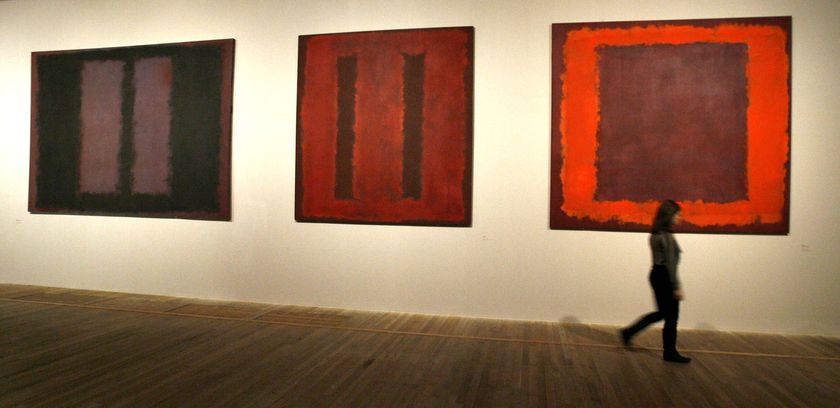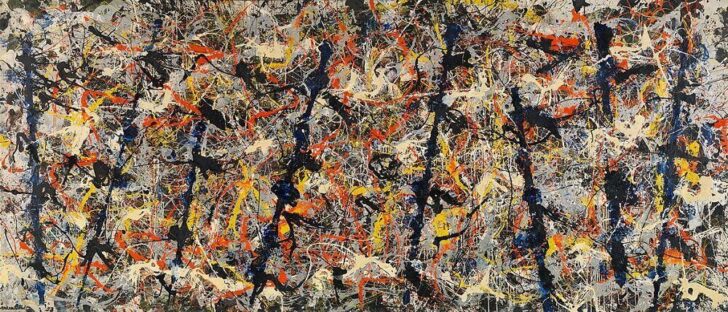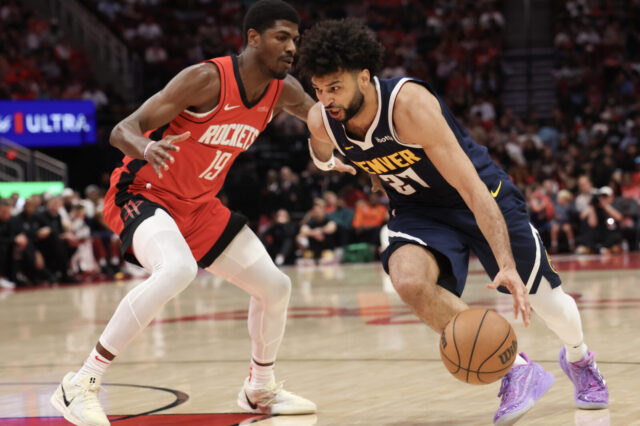Denver Nuggets star Nikola Jokic is having perhaps the finest season of his hall-of-fame level NBA career so far. Even he thinks so, saying “I think this is the best basketball of my life” in a recent post-game interview after yet another “Not Since Wilt” level performance. The season is made up of game after incredible game, and those games of moment after moment of both deceptively simple actions and large bombastic ones. The arguments about MVP and “greatest” player versus “best” will rage all year for the people concerned with those things, but I’m more interested in the performances themselves. Nikola Jokic may be the greatest artist in sports right now, and that’s what draws my interest. How do you properly appreciate someone who is focused on process and form, on meeting the game where it is every night rather than trying to force a playstyle to achieve the desired outcome? The common definition of art and the Supreme Court’s definition of obscenity are much the same: “I know it when I see it.” But do we? Do we really?
Modern art is essentially a century or so of experimentation with different mediums and styles of creation that did not follow in the direct footsteps of what came before. The work can be large and imposing, though it doesn’t have to be. It can include symbols and signs though it doesn’t need to. Most modern art is simply this: i doesn’t look like what came before, and it’s hoping to move you in ways that are both personal and subconscious as it was for the creator.
Jackson Pollock’s most famous works are drip paintings on a massive scale. They are a chaos of color and form that defy easy compartmentalization – and that are dismissed by many who are not moved by the seemingly random splashes. Pollock himself would not consider them random though – he was a big believer in the Jungian unconscious and would get into a flow state with his work.
“When I am in my painting, I’m not aware of what I’m doing. It is only after a sort of “get acquainted” period that I see what I have been about. I have no fear of making changes, destroying the image, etc., because the painting has a life of its own. I try to let it come through. It is only when I lose contact with the painting that the result is a mess. Otherwise there is pure harmony, an easy give and take, and the painting comes out well.”
— Jackson Pollock, My Painting, 1947
Mark Rothko painted big blocks of color. Whether those blocks of color upon color in a hundred layers that try to crawl through the canvas to get inside you actually move your heart is entirely up to you. He wanted to express primal emotions, to communicate without words or identifiable images, subconscious to subconscious. He wanted people to get as close as they could to his paintings, to really fall into the brush strokes. From far away or close enough to touch, these works of art were also deceptively simple and enormously complex. Pollock and Rothko. The paintings are vast, much bigger than can be properly appreciated through a small screen. They’re mesmerizing, endless in depth and calling out for an echo from within you the longer you look at them.

I try to appreciate Nikola Jokic’s art that way too. His canvas is a stretch of hardwood 94 feet long, other players the paint, the basketball his brush. Through 724 NBA games he has set out to create something in harmony with his teammates and the sport itself, and in doing so maybe show us something, tell us something, communicate with us in a language he speaks better then maybe anyone ever has.
You can look as closely at the work as you like; players like Will Barton talk about his footwork, his touch around the basket, how easy he makes it look and how complicated it truly is. You can get as far back as you like; he too likes to see the whole floor, every inch of the hardwood canvas, and when you do that as well you can see how he sets up plays, tracks players without looking at them, throws passes to where he knows teammates will be because it is the only place they CAN be – it is where they belong.
His arsenal seems too easy. Much like dripping paint or slathering on blocks of color, how hard could it really be? Can greatness truly be that simple? But Jokic is one of the greatest mid-range players of all time. He is also one of the greatest paint scorers ever, and one of the greatest rebounders ever, and passers, and on and on. Jokic is derided as an “efficiency merchant” but the object of the game is to put the ball in the basket and Jokic never, ever forgets the goal.
But he doesn’t like to force the issue. If the right move is to pass, then he will pass. Leave him to score one-on-one? He will do that instead. The game of basketball is a beautiful one, with so many options and decisions to make every possession, every touch of the basketball. Nobody makes all the right decisions, but Nikola makes more right ones than any of his peers and historical comparisons. And it makes for a beautiful game to watch, one that keeps improving somehow with every passing year. Even his teammates are amazed at the little adjustments he makes every time the ball is in his hands, as Jamal Murray talked about after Murray himself had a career-high 55 points:
There are no true historical comps for Jokic, not even Wilt. What he does has not been done while the game has been structured this way. The NBA addition of the three-point line in 1979 drew a line in the sand: modern basketball will be different than what came before it. And the game subsequently exploded in popularity, with modern analytics over the past decade creating a shift toward three point shooting that is bending the game further from tradition. Into that steps Jokic, who can do all the traditional center things (rebounding, paint scoring) and all of the 21st century ones (three point shooting, shot-making, passing).
This too makes some people mad. People fly off the handle for engagement, but also the idea that other people are seeing and feeling something by engaging with it seems to anger them – either because they’re not grasping it or they don’t want to understand. Art you don’t immediately understand can be frustrating, but I beg you: stick with it. Revisit it. Whether it’s blobs of paint on a canvas or a seemingly routine hook pass that no one else on the planet can complete, keep looking from every angle. Let these glimpses stir your soul.
And if you don’t think sports can be art? Well a certain social media account disagrees with you, but also: cabinet makers can be artisans too. Woodwork is a craft, making noodles or sushi to a certain standard can take 10 years of training. So many things in life can be an art If that’s your intent, and Jokic’s art is basketball. He paints us a new masterpiece every night. His belief in the basketball gods means he never tries to cheat the game, and he takes it as his duty to accept what the conditions are asking of his art on any given night. No piece will ever be quite the same, and not all his creations meet his standards, but there’s a high chance for beauty every time he steps on the court.
Just stare at the screen, or better yet in person. Stare, and marvel, and cherish a singular experience. Not every artist gets the chance to be appreciated in his own era, and some things can’t be properly appreciated without using as many of your senses as you can. You owe it to yourself to be in the arena for one of these performances, to get the full experience, because we will never see this again.



